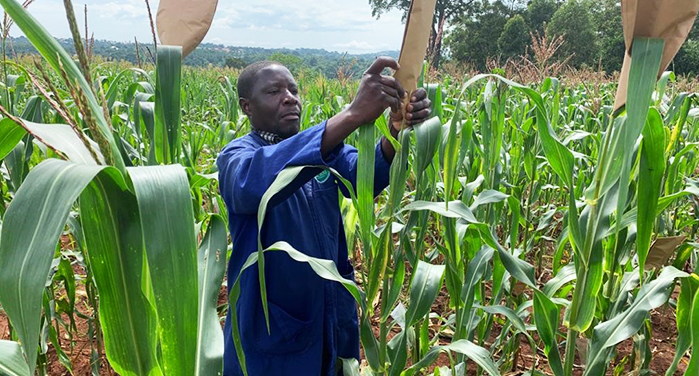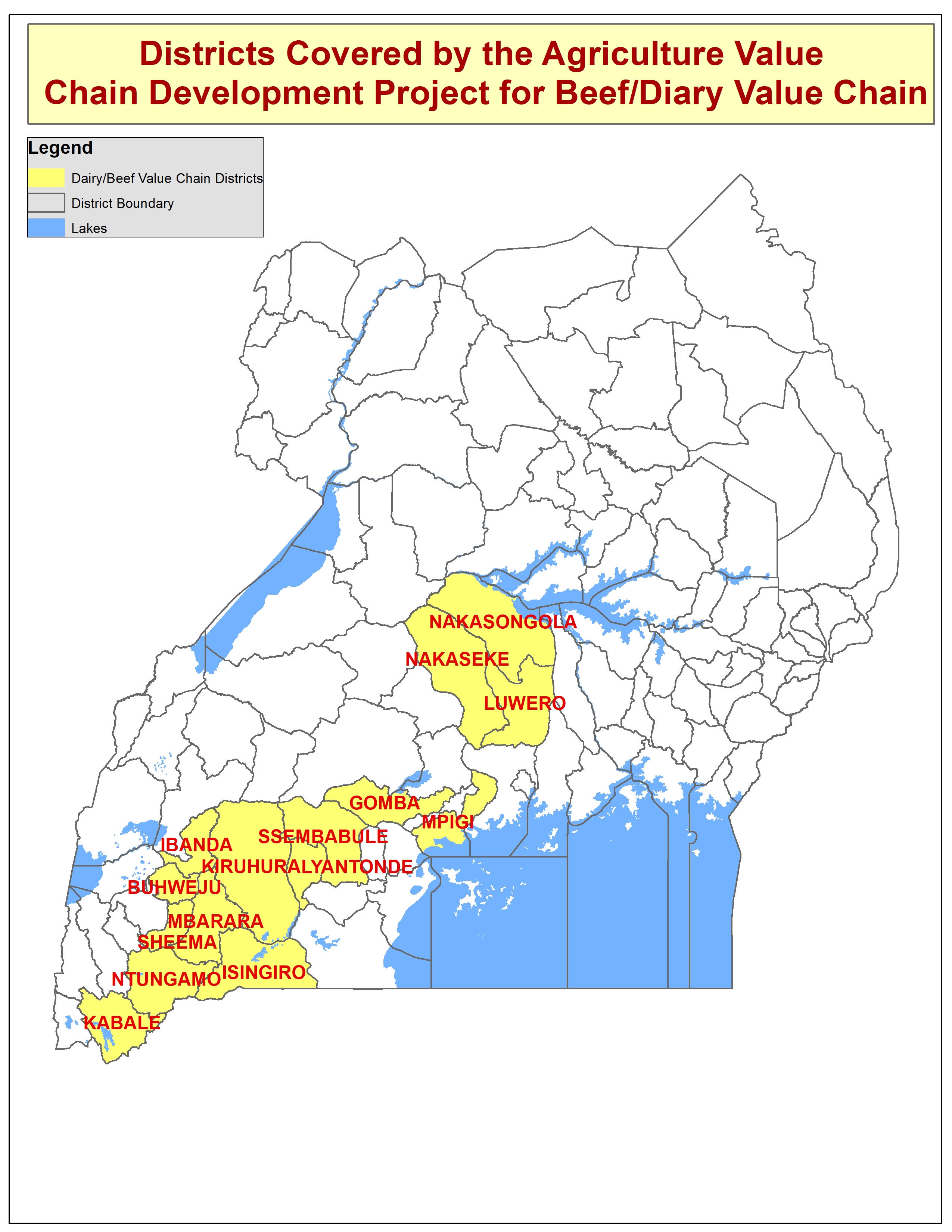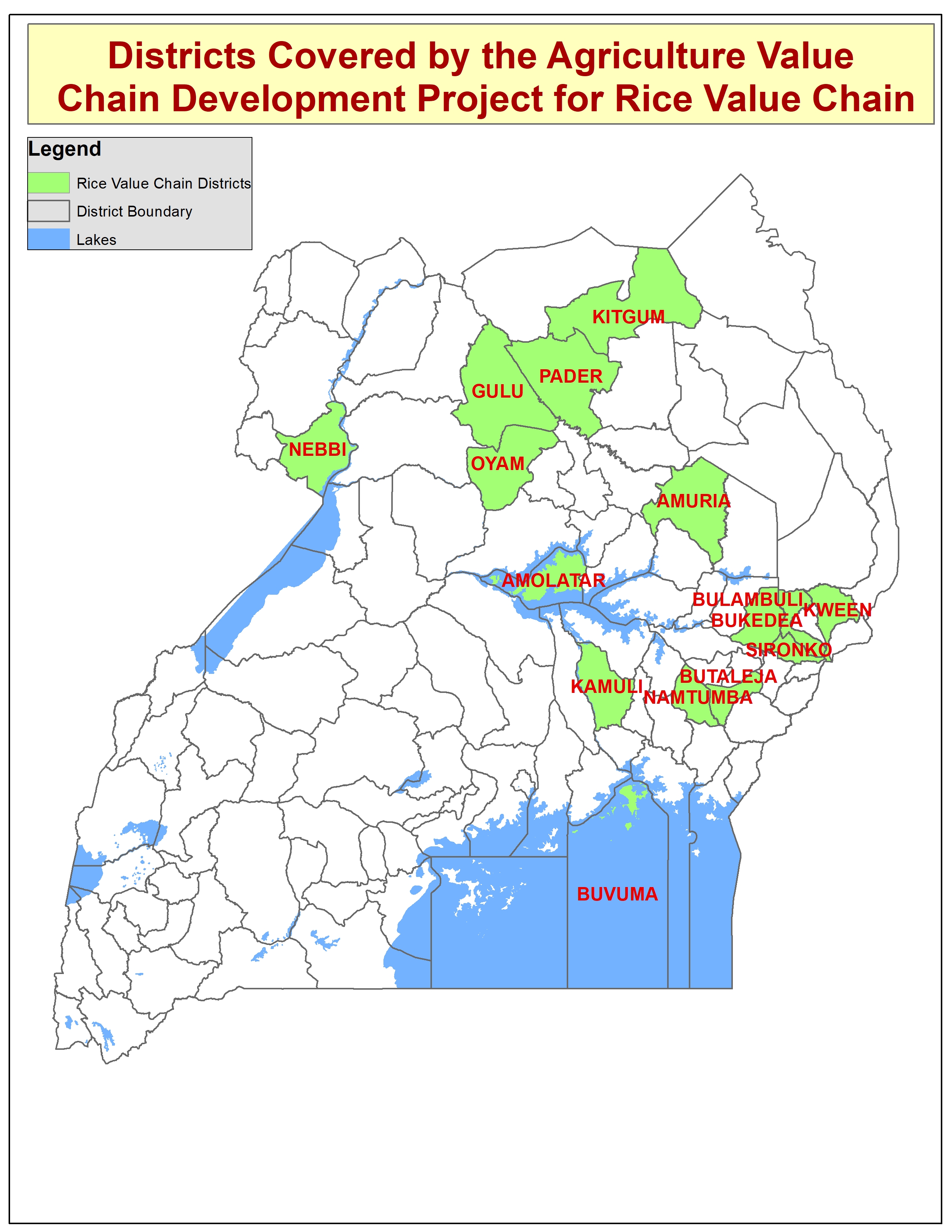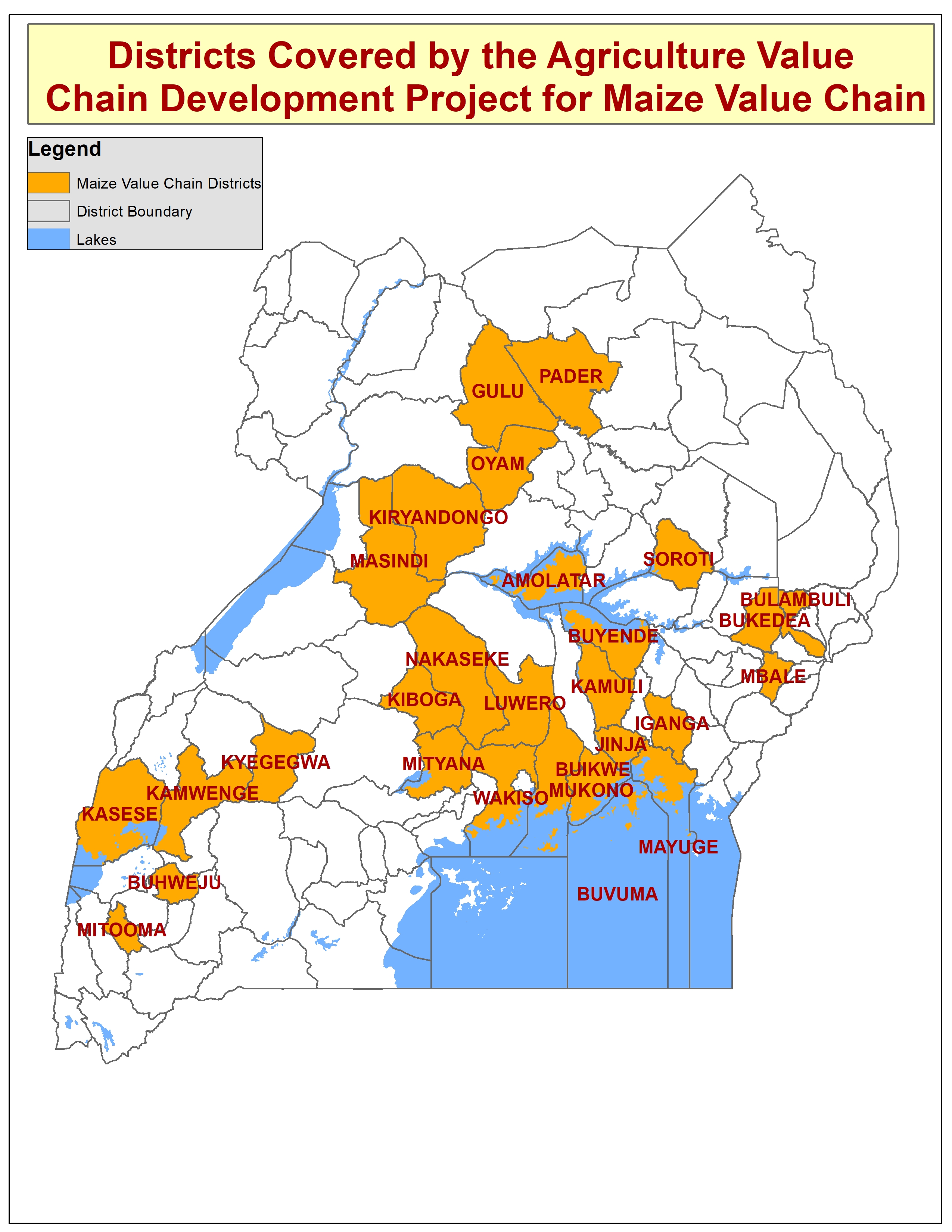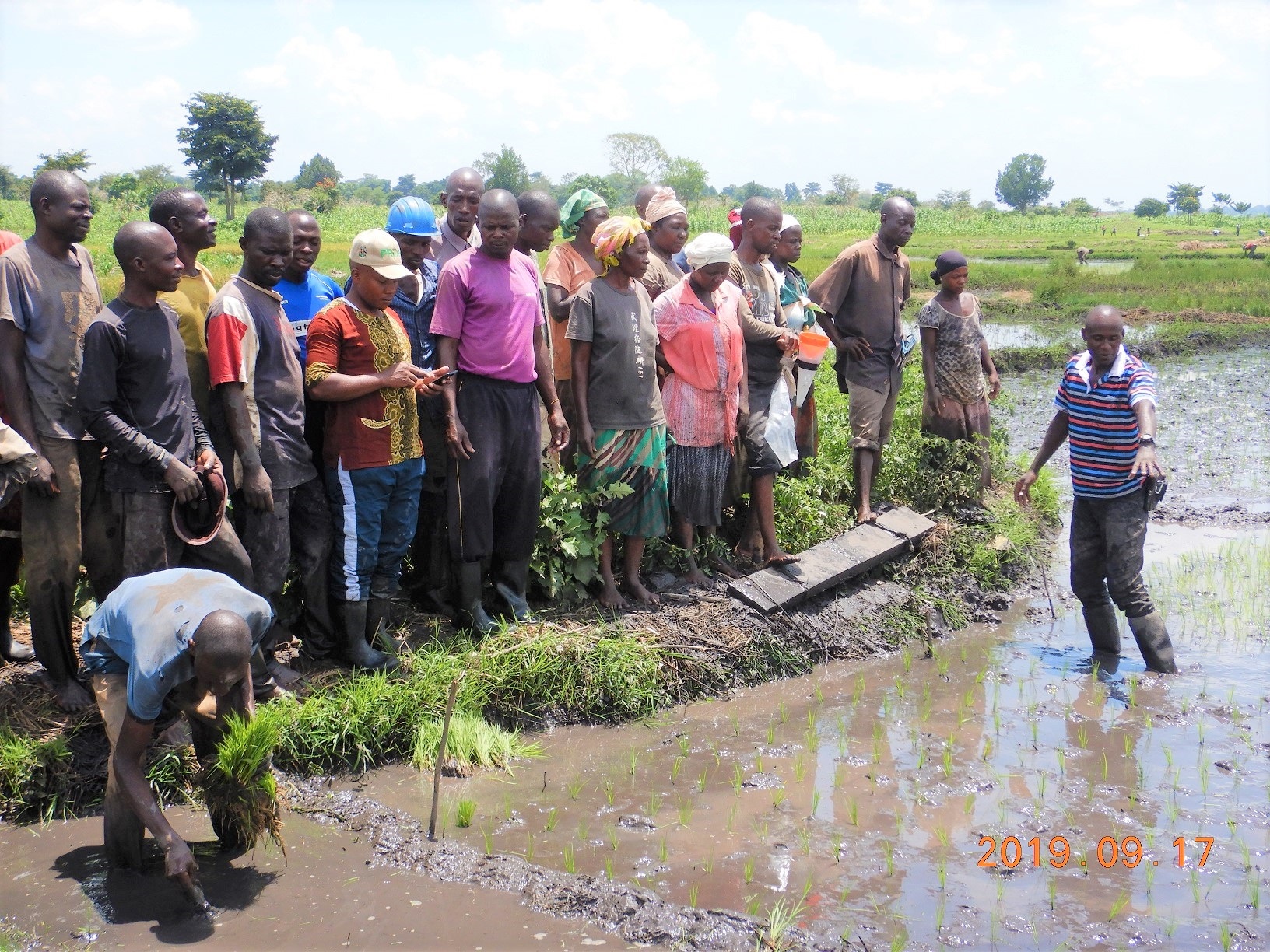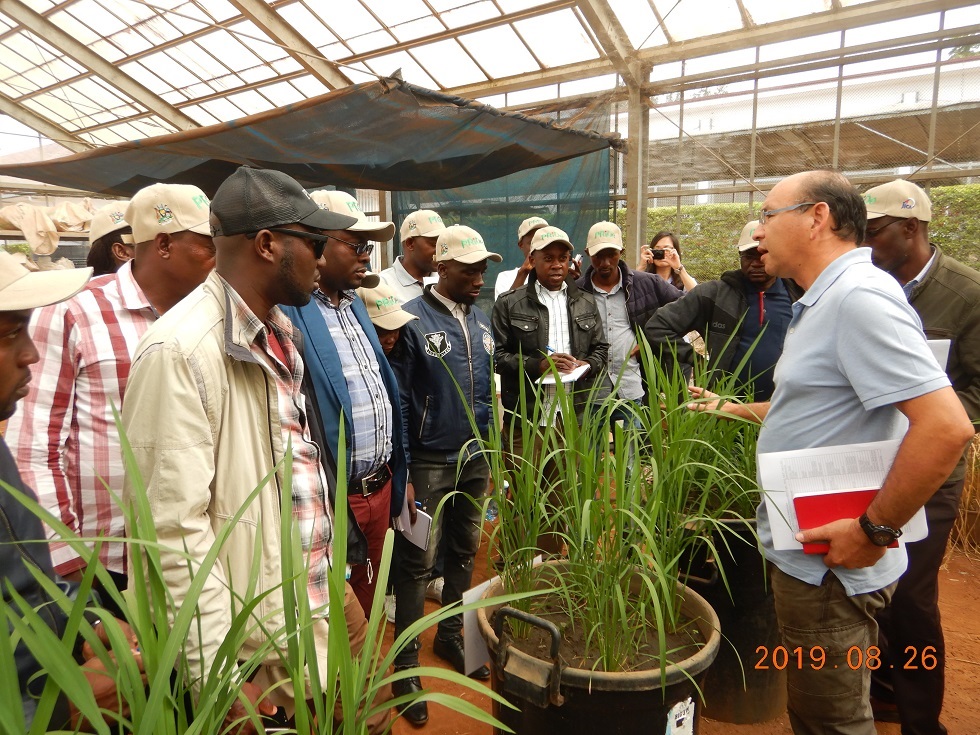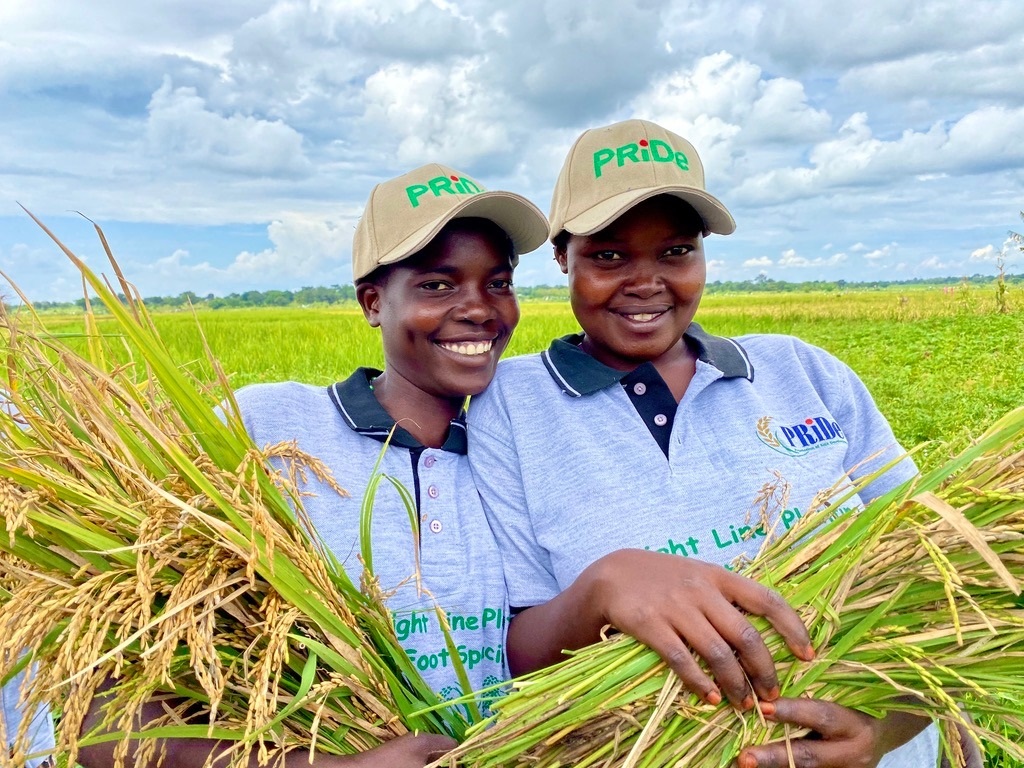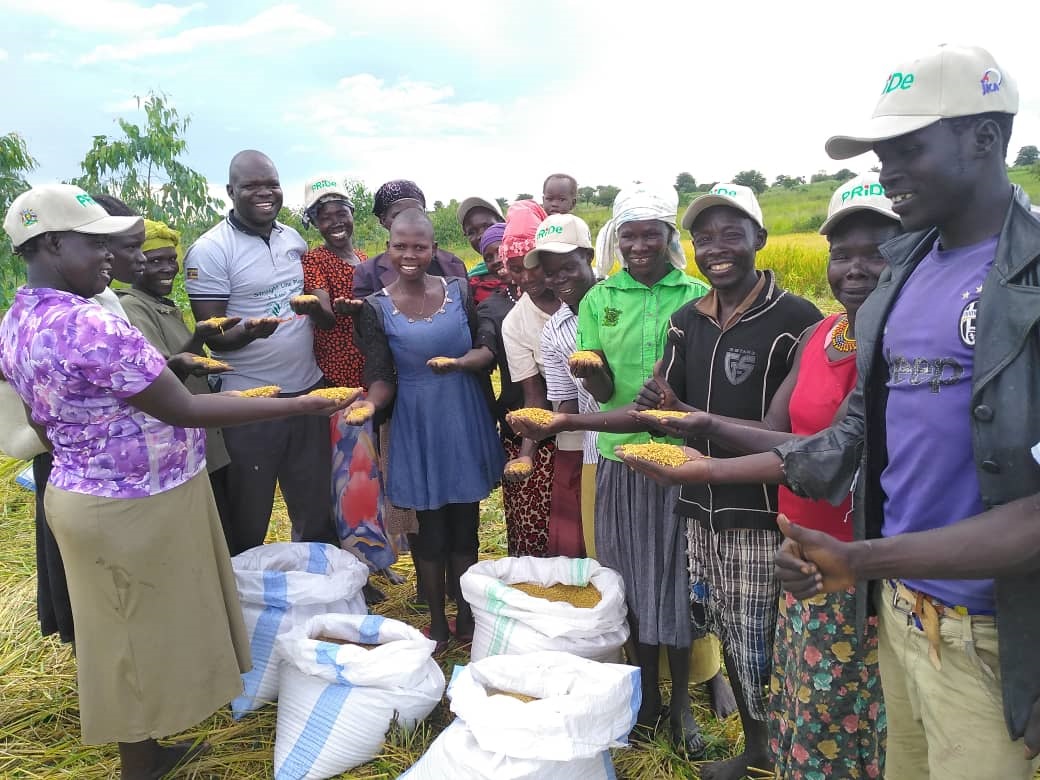Agricultural Value Chain Development Project
AVCP is a public sector investment project of Government implemented through the Ministry of Agriculture, Animal Industry and Fisheries with support from the African Development Bank.
The core value chains targeted by project interventions are Rice, Maize and Dairy/Beef where the partners aim at scaling up production and productivity, agribusiness development, providing risk sharing facility and undertaking capacity building activities.
Project Development Goal
The overall goal of the Project is to contribute to poverty reduction and economic growth in Uganda through enhanced productivity and commercialization of agriculture.
Specific Project Objective
The project objective is to improve household incomes, food security, and climate resilience through commercial agricultural practices, sustainable natural resources management and agricultural enterprise development.
Visit the project page using the link below:
Implementation Modality
The project will be implemented using an ICT-based platform.
This model that uses a private sector-led input distribution and Extension platform has been tried and tested by the Feed the Future project of the United States Agency for International Development (USAID) and will be replicated and expanded to reach our target Districts in Uganda.
The platform is integrated with the buyers and has successfully delivered certified seeds, fertilizer, extension, and other services including mechanization, crop insurance, market, and soil testing services to 301,000 farmers.
The ICT platform will be scaled up to reach millions of small holder farmers to raise their productivity while linking them to agro processors and other off-takers.
Project components
The Agricultural Value Chain Development Project will be implemented along a commodity value chain framework, with considerable attention to regulatory reforms.
The project will comprise of three operational components and one management component namely:
i) Production and Productivity Enhancement
ii) Infrastructure Development
iii) Market Development and Trade Facilitation and
iv) Project Management and Coordination.
The districts where the interventions for the respective value chains are to be implemented are highlighted in the project maps below.
Beneficiary districts
The project is implementing maize value chain development activities in Amolatar, Buhweju, Buikwe, Bukedea, Bulambuli, Buvuma, Buyende, Gulu, Iganga, Jinja, Kamuli, Kamwenge, Kasese, Kiboga, Kiryandongo, Kyegegwa, Luwero, Masindi, Mayuge, Mbale, Mitooma, Mityana, Mukono, Nakaseke, Oyam, Pader, Soroti and Wakiso
The project is implementing rice value chain development activities in Amuria, Bukedea, Bulambuli, Butaleja, Buvuma, Gulu, Kamuli, Kitgum, Kween, Namutumba, Nebbi, Oyam, Pader and Sironko.
The project is implementing dairy and beef development activities in Buhweju, Gomba, Ibanda, Isingiro, Kabale, Kiruhura, Luwero, Lyantonde, Mbarara, Mpigi, Nakaseke, Nakasongola, Ntungamo, Sembabule and Sheema.
Brief on the project components
Production and Productivity Enhancement
The project activities target at least 450,000 maize growers, 205,000 rice farmers and more than 2 million dairy and beef farmers. The project will annually generate an additional production of 450,000 MT of maize, 328,000 MT of rice, contribute to achieving the increase in milk production from the current 2.2 billion liters to the targeted 3.35 billion liters and to contribute to achieving the increase in beef production from the current 211,358 MT to the targeted 360,000 MT each year by 2023. Currently, the Grain Council of Uganda has a total storage capacity of about 750,000 MT and a total processing capacity of 9,000 MT/ day. The project interventions will increase the utilization of the installed storage and processing capacity from the current 30% to at least 60% by June of 2023.
The project is supporting NARO to produce and avail improved breeder and foundation seed (NARO has already released high yielding varieties - but has not yet commercialized many of them), and is establishing partnerships between NARO and seed companies on the one hand, and NARO and farmer groups on the other hand, to multiply this foundation seed so as to increase availability of quality declared/ certified seed.
The project is procuring equipment for Government Inspectors at border posts, the airport and is also supporting the National Seed Certification Service (NSCS) at MAAIF to follow up and backstop the seed companies and the local seed businesses (project supported farmer groups) that are multiplying the foundation seed from NARO, to ensure that they are producing the required quality and quantity of certified seed.
The project is also supporting the National Animal Genetics and Resources Databank (NAGRC &DB) to improve beef/ dairy breeds and Dairy Development Authority through robust multiplication programs of using artificial insemination, embryo transfer and community breeding.
Agricultural Infrastructure development Component
The project is finalizing the contractual processes to construct a gravity fed irrigation scheme in Sironko with a gross command area of 1,608 hectares, which will serve 507 households. The beneficiary households will contribute to maintenance of the irrigation system and water ways through minimal charge deductions to their sales by the Water User Association. The Irrigation Water Users Association will also prepare and implement irrigation scheme Operation & Maintenance (O&M) and also collect/manage fees from members (registration fee, water users fee, etc).
The irrigation scheme is situated on River Sironko, and the area of focus runs across three districts; Sironko, Bukedea and Bulambuli. Also, access roads will be provided to link the different blocks within the irrigation scheme. The scheme will also have support infrastructure including a 500 square meter ware house, a 1,000 square meter grain store, a mechanical workshop and 1,320 square meter rice drying yard.
The project has is also in the contractual process to construct 15 medium scale irrigation infrastructure demonstrations to support rice farmers in Northern Uganda i.e Gulu, Pader, Oyam, and Amolatar and Kamuli (More sites will be determined after water catchment studies are undertaken during the inception stage of the project). These will be both solar and diesel powered and will be managed and maintained by the farmer group associations.
Market development and trade facilitation for agricultural commodities
The project is procuring an Information, Communication and Technology (ICT) platform that will link farmers to processors and large traders through the use of modern information technology. The objective of this component is to enable our farmers to produce 1st grade maize and rice which will earn them premium prices in the regional and international markets. Nucleus and model farmers will be supported with post-harvest facilities including threshers, sorters, graders and other post-harvest management infrastructure.
The project is also strengthening the National Seed Certification Services with well-equipped laboratories and resources to inspect, evaluate and certify all seeds produced and sold in Uganda. The project is already in the contractual process to rehabilitate the Post Entry Quarantine Station (PEQS) in Namalere which will enable the Ministry to carry out the much-needed disease diagnostics for seed and regulation of other critical agro-inputs. The structures that are being rehabilitated include:
- The plant health and diagnostics laboratory and associated facilities
- The pesticides formulation and residue analytical laboratory
- The fertilizer analytical laboratory
- The soil analysis laboratory and associated facilities
The project is in the contractual process to construct and equip animal disease control centers which will specifically contribute to animal movement control and ultimately to animal disease control. The animal disease control centers will be constructed in Amuru and Lyantonde districts. These districts were selected due to the availability of Ministry land with no encroachment and also their ability to operate as animal holding grounds as shown below:
- Amuru animal holding grounds: Animals destined for Arua (with final destinations in Democratic Republic of Congo, North and South Sudan)
- Lyantonde: Animals destined for the domestic market in Kampala and for export to the United Republic of Tanzania
The project has completed the conditional assessments and started the contracting process for the rehabilitation of the Semen Laboratory at NAGRC & DB, and, also the rehabilitation and equipping of 2 milk collection centers which will be fitted with coolers and generators at Nakasongola and Kamwenge districts.
The project has contracted a Supervision Consultant and is finalizing the contract for a construction firm to construct a National Meteorology Laboratory at Uganda National Bureau of Standards which will enable Uganda to realize International Accreditation. The laboratory will ensure that the equipment in the National Food Safety Laboratory and other agro-food processing laboratories in the country are calibrated to ensure accurate measurement and reliable test results to support exports and consumer safety.
Other projects
- National Oil Palm Project Uganda
- NUFLIP PHASE 1
- The UMFSNP project
- Banana Livelihood Diversification project
- Uganda-China Cooperation
- The ACDP project
- The VODP2
- The ENRP project
- The ATAAS project
- The PISD project
- The RPLRP project
- The MOBIP project
- The Goat Export Project
The Uganda Multi-sectoral Food Security and Nutrition Project (UMFSNP) is implemented, over a period of five years, by the Government of Uganda (GoU) through the Ministry of Agriculture, Animal Industry, and Fisheries (MAAIF) working in a multi-sectoral collaboration with the Ministry of Health (MoH) and the Ministry of Education, Science Technology and Sports (MoESTS)
This project helps to support vulnerable communities in Western Uganda to better adapt to the effects of climate change (CC) through banana value addition activities, to provide greater opportunities for income generation, poverty reduction and food security
The Government of the Republic of Uganda and the Government of the People’s Republic of China have had a cordial relationship for a long time. China has made significant contributions to Uganda’s Agricultural sector development including provision of project aid to Uganda in form of interest-free loans and grants. Notable ones include the Kibimba and Doho rice schemes, Wakawaka Fish landing site, Kajjansi Aquaculture Training Centre, Hydropower Stations and Road Construction. Trade has included leather, coffee, fish and food products among others.
The Ministry of Agriculture, Animal Industry and Fisheries (MAAIF), with support from the World Bank is implementing the Agriculture Cluster Development Project (ACDP). The project arose from the need to implement the Ministry’s comprehensive plan to operationalize the Agriculture Sector Development Strategy and Investment Plan 2011/12 – 2014/15 (now Agriculture Sector Strategic Plan 2015/16 – 2019/20) and in line with the Uganda National Development Plan.
Uganda imports 60-70% of its edible and soap needs; Population growth and rising incomes continue to fuel an annual growth rate of 9% in domestic and regional demand for vegetable oil and its by-products. VODP 2 is Uganda’s strategic effort and increase domestic vegetable oil production, address rural poverty by involving smallholder farmers in oil crops production and improve the health of the population through increased vegetable oil intake.
The project is expected to increase production and productivity, mainly of small holder rice farmers, by focusing on those factors that currently limit production which include;
In 2010, the ATAAS project was developed as an investment in maintaining and raising the level of farmer productivity and household income through the development and adoption of modern farming technologies, techniques and strengthening market linkages. The project had key activities along the research-extension-farmer-market value chain continuum under five components: (1) Developing Agricultural Technologies and Strengthening the National Agricultural Research System (NARS); (2) Enhancing Partnerships between Agricultural Research, Advisory Services and other Stakeholders; (3) Strengthening the National Agricultural Advisory Services (NAADS); (4) Supporting Agribusiness Services and Market Linkages; and (5) Program Management and Coordination.
The Ministry of Agriculture, Animal Industry, and Fisheries (MAAIF) and Japan International Cooperation Agency (JICA) agreed to execute a study for Irrigation Scheme Development referred to as The Project on Irrigation Scheme Development in Central and Eastern Uganda (PISD) through technical cooperation.
The focus was on establishment of medium and large scale irrigation scheme in Uganda targeting farmers cultivating mainly rice in lowland areas with season flooding and unreliable agricultural water source(s). The Study has was entrusted by JICA to the JICA Study Team consists of a consultant from Japan in collaboration with counterpart staffs from MAAIF and MWE. A total of 10 candidate sites districts were studied for irrigation development potential in the districts of Butambala, Buikwe, Kween, Sironko, Bukedea, Bulambuli, Mbale, Butaleja, Budaka and Soroti..
The Regional Pastoral Livelihoods Resilience Project (RPLRP) is a regional project financed by a USD 40 Million loan got by GOU from the World Bank and implemented by three IGAD member states: Uganda, Kenya and Ethiopia.
The RPLRP was prepared within the framework of the IGAD Drought Disaster Resilience and Sustainability Initiative (IDDRSI) and aligned with the Regional Programming Paper (RPP) and Country Programming Paper (CPPs).
Uganda Vision 20140 is a key strategy document for the government of Uganda (GOU) and aims to make Uganda a middle-income country by 2040. The National Development Plan II (NDP2) mentions the development of the livestock sector as one of these strategies, and in particular Uganda’s ability to produce some of the best beef in Africa.
Project Objectives
“To enhance the contribution of the goat industry to farmers’ income and welfare.”
Specific objectives
Avail improved indigenous and exotic (Savannah) goat germplasm to farmers in the project area which will serve as a springboard for establishing a pilot goat export zone in the country
To establish open nucleus breeding herds coupled with systematic cross breeding programme for generating meat goat types for fattening and
Improve the goat management systems and create sustainable supplies of quality goats for internal and export markets.

